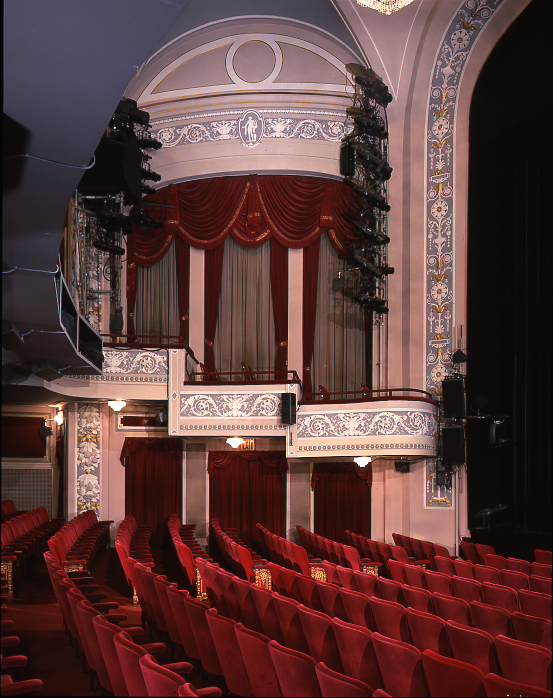










NOW PLAYING
COME FROM AWAY
Broadway’s Come From Away is a Best Musical winner all across North America!
This New York Times Critics’ Pick takes you into the heart of the remarkable true story of 7,000 stranded passengers and the small town in Newfoundland that welcomed them. Cultures clashed and nerves ran high, but uneasiness turned into trust, music soared into the night, and gratitude grew into enduring friendships.
Don’t miss this breathtaking new musical written by Tony® nominees Irene Sankoff and David Hein, and helmed by Tony-winning Best Director, Christopher Ashley. Newsweek cheers, “It takes you to a place you never want to leave!”On 9/11, the world stopped. On 9/12, their stories moved us all.
“Exuberant! A reminder of who we are all meant to be.” – The Washington Post
“A celebration of the best of humankind.” – The Daily Beast
“You can sense the connections with the show being felt in the theatre, row by row.” – Variety
Come From Away Show Tickets | Come From Away Show Schedule
HISTORY
The Shuberts built the Gerald Schoenfeld Theatre (formerly the Plymouth) along with the contiguous Broadhurst in 1917. The playhouse was initially leased to producer Arthur M. Hopkins who achieved much success in booking it. It was renamed the Gerald Schoenfeld in 2005 to honor the late chairman of the Shubert Organization.
ARCHITECTURE
The Schoenfeld was the architect Herbert Krapp’s first independent commission. The interior design motifs, including the Adamsesque detailing, subtly reflect those of the somewhat more ornate Booth and Shubert.
Spotlight on Broadway: Gerald Schoenfeld Theatre from Spotlight on Broadway on Vimeo.
Access Information
Theatre is not completely wheelchair accessible. There are no steps into the theatre from the sidewalk. Please be advised that where there are steps either into or within the theatre, we are unable to provide assistance.
Shubert Audience Services
The Shubert Theatre provides accommodations for patrons who are blind, deaf, partially sighted, and/or have hearing loss. The theatre provides infrared assistive listening devices for every performance at the theatre. In addition, beginning four weeks after a show’s official opening night performance, hand-held audio description devices and hand-held captioning devices are available, and there is unlimited access to downloadable audio description and/or captioning for personal mobile devices free of charge. (Hand-held devices are limited, although additional devices can be obtained with at least twenty-four hours’ notice.) If you have questions, contact Shubert Audience Services at 212-944-3700 or audienceservices@shubertorg.com. There is also a representative at the Shubert Audience Services kiosk at every performance to assist any patron with any of our devices, software, or technology.
Accessibility by Seating Section
Orchestra Location: Seating is accessible to all parts of the Orchestra without steps. There are no steps to the designated wheelchair seating location.
Mezzanine Location: Located on 2nd level, up 1 flight of stairs (31 steps). Please Note: On the Mezzanine level, there are approximately 2 steps down per row. Entrance to Mezzanine is behind row K.
Handrails: Available at the end of every stepped seat row in the Mezzanine.
Wheelchair | Companion Seat Locations:
Orchestra: S102 | S101, R101-102; S111 | S112, R109-110; R23 | R17-21; S4 | R6-8; S15 | S17, R13-15; S3 | S1, R5-7; S11 | S9, R9-11
Aisle Seat with Folding Armrest | Companion Locations:
Orchestra: N114 | N113; M28 | M26; O26 | O24; R1 | R3
Elevators/Escalator
None Available
Payphone
Located in lobby. Accessible at 54".
Restroom
A wheelchair accessible restroom (unisex) is located on the main level.
Water Fountain
Located in restrooms.
Theatre Policies
The use of cameras, recording devices, cell phones, beepers, and other electronic devices during the performance is prohibited. Everyone attending a performance must have a ticket. Latecomers will be seated at the discretion of management. Wheelchair and mobility-impaired seating is intended for patrons with mobility disabilities. Children under the age of four years will not be admitted. No outside food or beverage permitted, unless medically necessary. No weapons permitted on the premises.
THEATRE SPECS
Gerald Schoenfeld Theatre
236 West 45th Street
Between Broadway and 8th Avenue
New York NY 10036
| Year Built | 1917 | |
| Seating Capacity | 1079 Total | |
| Orchestra | 653 | |
| Mezzanine | 392 | |
| Boxes | 24 | |
| Standing | 15 | |
| Total | 1084 | |
| Included in Numbers Above: | ||
| Orchestra Pit | 36 | |
| Wheelchair | 7 | |
| Aisle Transfer Arm | 11 | |
| Theatre Dimensions | |
| Proscenium Opening: | 40' 0" |
| Height of Proscenium: | 38' 0" |
| Depth to proscenium: | 26' 9" |
| Depth to front of stage: | 28' 3" |
| Stage Type: | Proscenium |






















